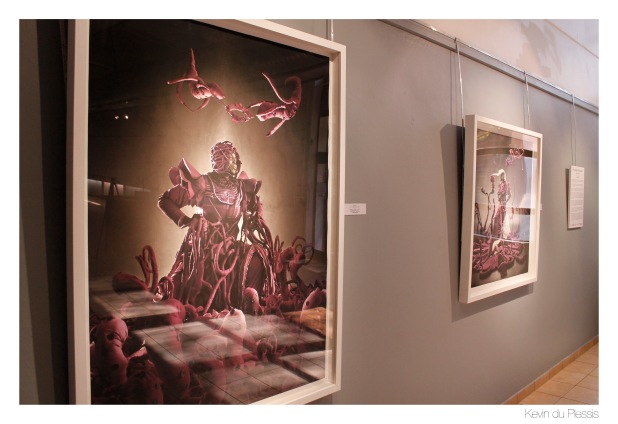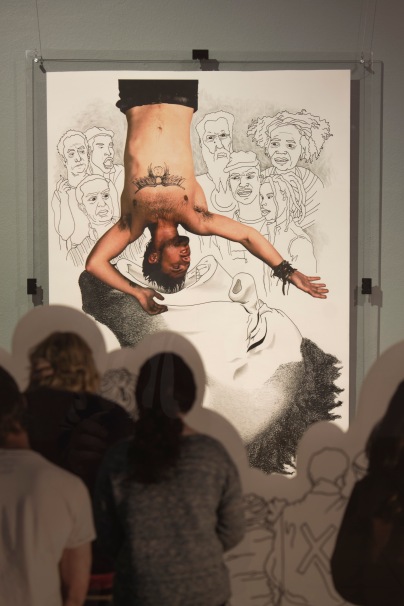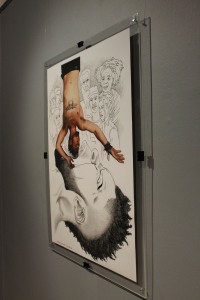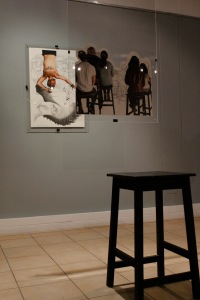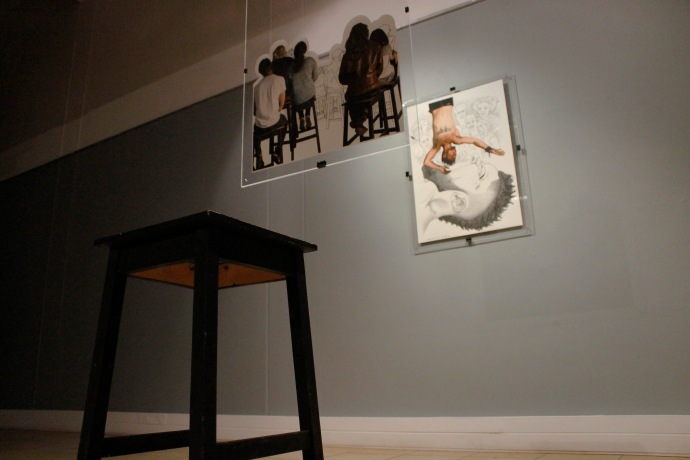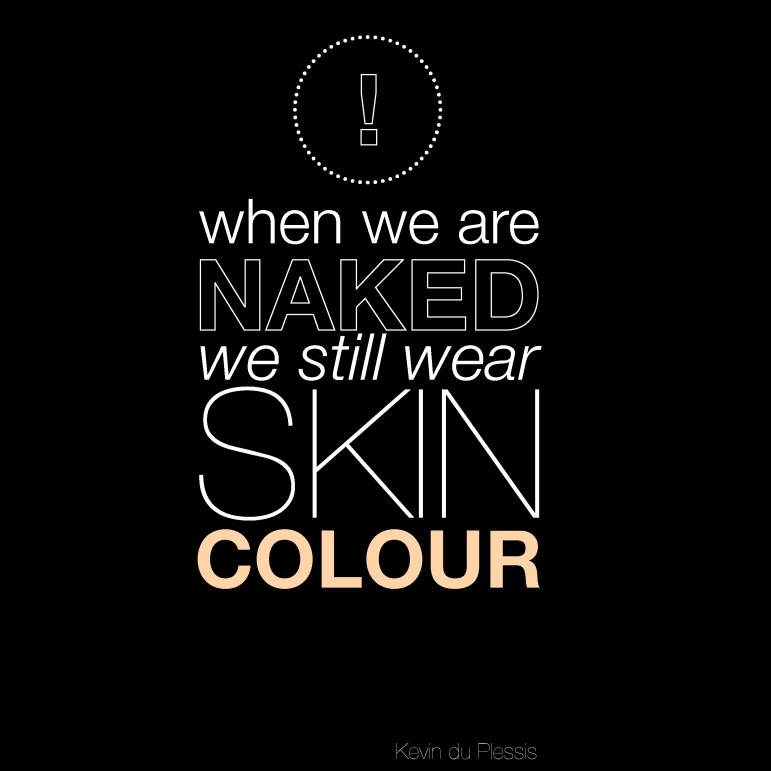There is a lot to say about these works, lots to discuss, but what it comes down to is that one must experience these works, the same as with any other installation piece. Mary Sibande’s alter ego “Sophie” who used to depict the fears, hopes, dreams, and desires of three generations of black women in her family, who were all employed as domestic workers, now takes a new turn.
Mary, having first dreamt about becoming a fashion designer, chose to use textile as her preferred medium and makes beautiful dresses that hybridises Victorian dress with that of the worker’s uniform, creating an intense contrasting motif which draws your attention to colonialism and issues of race, projections and perceptions, in South Africa.
With the new colour purple taking over from the previous blue, Mary steps into a new era in her work which no longer focuses on the oppressed women of the past but the transformed women of today. Mary is starting a conversation about herself, her own transformation as a modern black woman in South Africa.
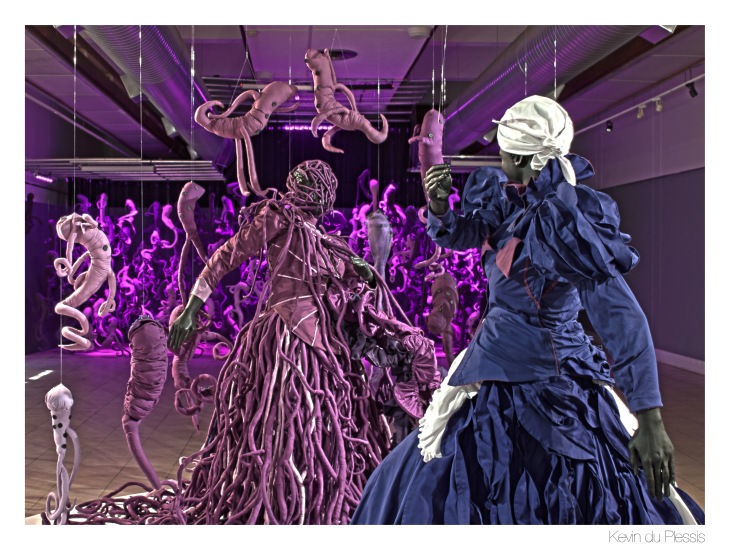
“A Reversed Retrogress” shows the old Sophie and the new Sophie in a combat of sorts, the new and the old have come to a crossroads and only one can move forward. This photo was taken in the NWU Gallery and it is the very last time that the blue Sophie will ever appear in Mary’s work.
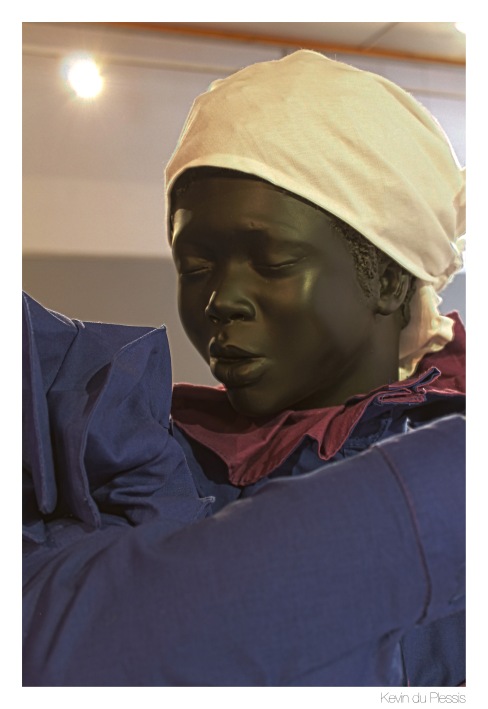
Sophie, cast from Mary Sibande’s own features, always has her eyes closed so that she can dream up these fantastic scenes where she transports herself into a visual world of what could be, what is happening to her, what processes she sees herself experiencing.
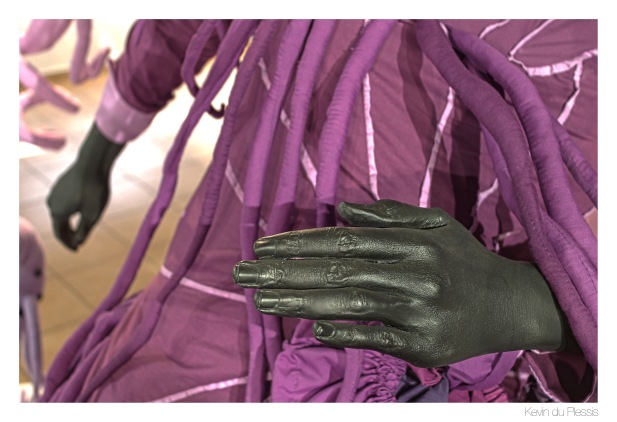
Note the beautiful detail on the hands and how they catch the light. In the prints (below) Mary poses as Sophie and it is noteworthy that she has managed to match her own skin texture with the beautiful matt black on the installation pieces.
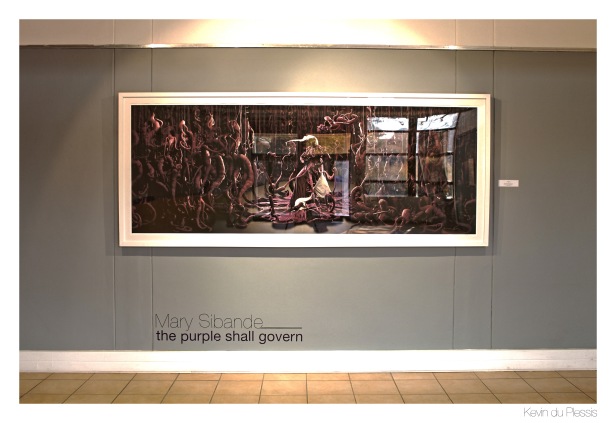
“A Terrible Beuaty is Born”. Sophie’s apron is being ripped off by her creatures. She is being born as a redefined version of the black South African woman.
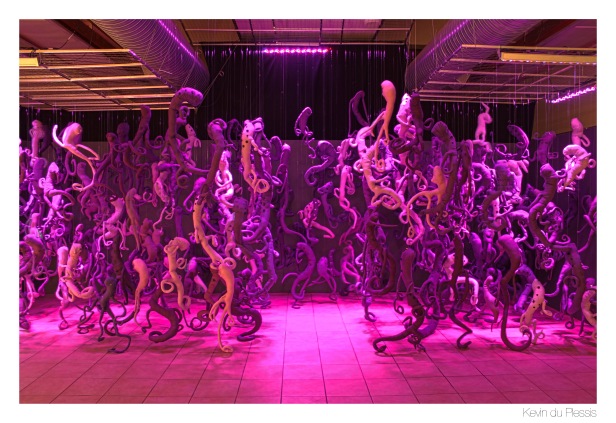
“Non Winged Ceiling Beings” installation. The shape and form of these beings as well as that of Sophie’s dress in Retrogress, is inspired by Mary’s uncle who was in an accident and had to carry/hold in his organs for two kilometers. This image must have appealed to the artist as it represents that which comes from within, released and shown to the world while it is also a difficult and painful process. These beings must be interacted with for you to decide what they represent…did Sophie give birth to them, are they her army, what exactly do they do? How do they strengthen this particular vision Sophie is having? We must also take into account here that the inspiration for the title of the show comes from a peaceful riot during Apartheid where participants were sprayed or marked with purple pigment in order to differentiate or shame them. Mary uses it as a symbol of pride and rebirth.
